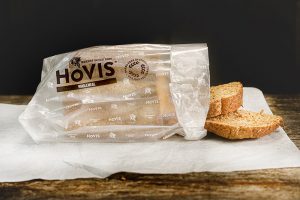The Analysts’ View: Six reasons why Morrisons is struggling

RETAIL analysts have pulled no punches this morning in the wake of Morrisons Christmas trading figures.
Like-for-like sales, excluding fuel, were down 3.1%, which capped off a poor year as the retailer struggled to get any sales momentum.
David Gray, retail analyst at Planet Retail, said: “This morning’s underwhelming, if improving, set of numbers shows there’s still much work to do for the beleaguered Bradford-based grocer” while John Ibbotson of the retail consultants, Retail Vision, was blunter: “Never have such poor results been so highly regarded. It’s verging on the tragi-comic.”
There are significant challenges for Andrew Higginson, who becomes chairman on January 22, and the person he picks to replace outgoing chief executive Dalton Philips.
Here are six reasons why the Bradford-based retailer is struggling:
1. It has lost its USP
“The overriding challenge is to find a space in the market that resonates with consumers – in short, why Morrisons?,” said Warwick Business School’s Prof Christopher Beer, who trains and mentors chief executives.
“Historically, the main reason for shopping at Morrisons was that they were low-price. Having lost that mantle to Aldi and Lidl it is unclear why you would go to Morrisons. Clear differentiation communicated in a compelling way – that’s essential and not easy.”
2. Discount retailers are stealing its lunch
The strong growth of Aldi and Lidl has disrupted the sector, although as Asda chief executive Andy Clarke highlighted earlier this month, Kwik Save is a reminder that discount retailers are not a new challenge for the big supermarket chains.
However Aldi and Lidl have strong momentum and continue to take market share, between them claiming 8.6%, getting closer to Morrisons’ 11.2%.
3. It is losing ground to its established rivals, too
Phil Dorrell of retail consultants Retail Remedy points out that it is not just the performance of the discount retailers which is causing sleepless nights for Morrisons’ management team.
“Falling sales is not the biggest issue, rather the problem is that its sales are falling much faster than those of Sainsbury’s and even Tesco,” he said.
Mr Gray agrees that pressure is coming from several fronts. He said: “The fact the discounters are gaining market share at the value end of the market, with Waitrose and M&S gaining market share at the premium end of the market means the centre ground – Morrisons, Tesco, Asda, Sainsbury’s – are likely to remain under pressure. “
However Tesco and Sainsbury’s are both receiving significant boosts from online sales and convenience stores – unlike Morrisons.
4. Too little, too late online
“Morrisons is so late to the online party that its rivals have already polished off the cheese course, leaving it hovering awkwardly by the door,” said Mr Dorrell. “Trumpeting its on-time delivery stats is a distraction in a business which has to be first and foremost about volume.”
5. An in-convenience truth?
Although Morrisons is now playing catch-up on convenience stores, it is so far behind its rivals that Tesco’s offer has already matured and is now being slightly shrunk back.
“The recent decision by Tesco to close some 25 Express convenience stores shows that this channel does not necessarily offer a golden ticket to success,” said Mr Gray. “Morrisons needs to think carefully about allocating funds to c-store and online grocery expansion, which might be better spent overhauling the company’s most profitable business unit – hypermarkets and superstores.“
6. The failure of the £1bn price cuts
Prof Beer gave Mr Philips some credit for his efforts in online and convenience, but Morrisons is in such a state that boldness is perceived as panic.
He said: “”To be fair some good things have been done, but it is arguable that they have been too little and too late. Improving the online offering and developing a more coherent convenience strategy were critical but Morrisons is in catch-up mode. Even the bold decision to declare that profits would be sacrificed to sustain competitiveness looked like a panic move.
Further, the latest sales figures provide scant evidence that the price cuts have brought shoppers through its doors.
“The negative performance comes in the wake of a £1bn price investment programme – which was meant to be the company’s salvation,” added Mr Gray.








